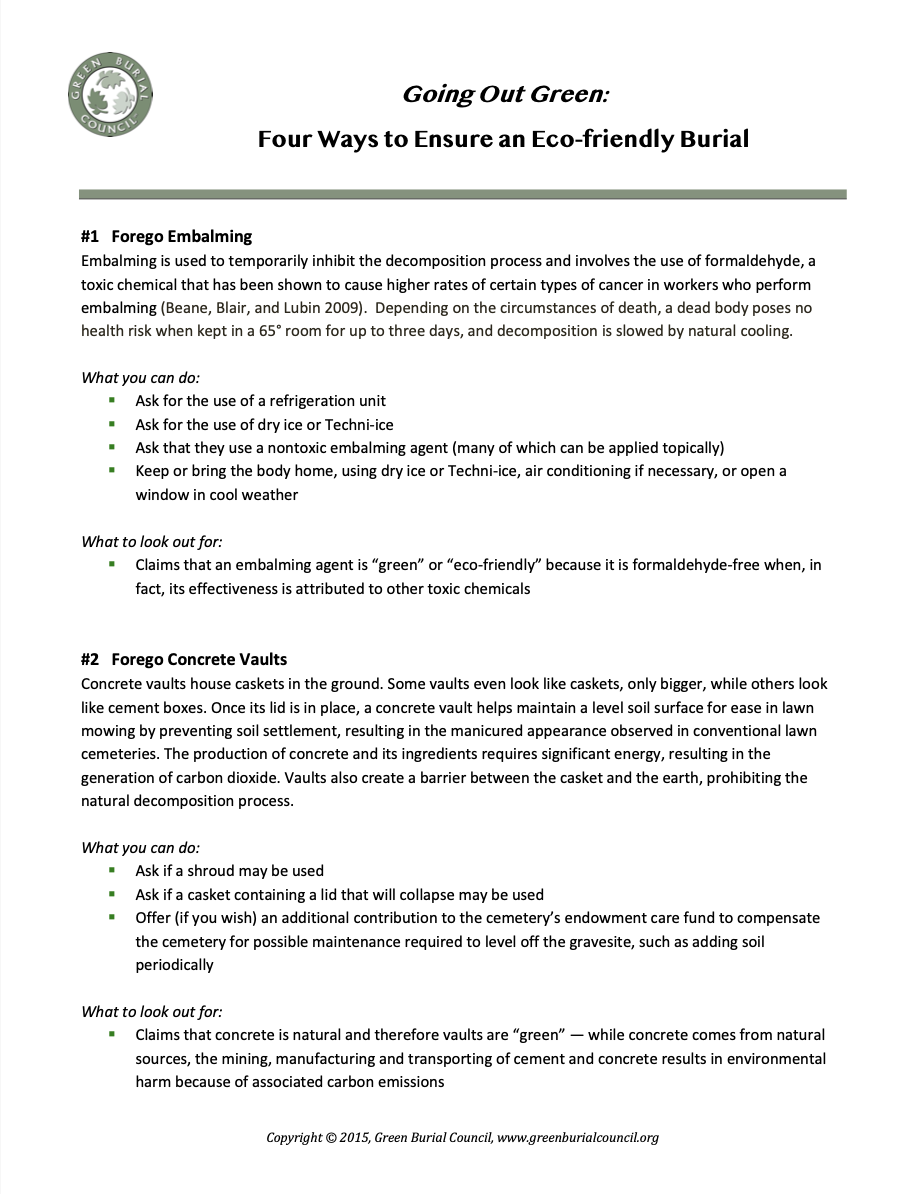Plan a Green Burial
For many people, navigating what to do when someone dies is unfamiliar territory—and when green burial is chosen, it can feel even more uncertain. Green burial practices vary from place to place, and every funeral is unique. This page is here to guide you through common questions, expectations, and considerations, no matter where the burial takes place. Our goal is to help make your first green burial experience thoughtful, informed, and deeply meaningful.
Stories About Planning
How to Host a Sustainable Celebration of Life Gathering
When a loved one passes, it is certainly natural to go through a period of mourning. However, after attending to…
Five Green Ways to Honor Your Departed Dog
Written by Miranda Booher for the Green Burial Council. Read more about the author at the end of this article. There…
Making Palliative Care More Eco-friendly
When the end of a loved one’s life approaches, difficult decisions must be made. From choosing the right palliative and…
Our Last Best Act: Planning for the End of our Lives to Protect the People and Places We Love
After his sudden death in 2005, my father had a natural burial in his neighborhood cemetery—although I’d never heard the…



